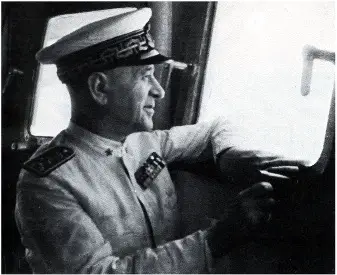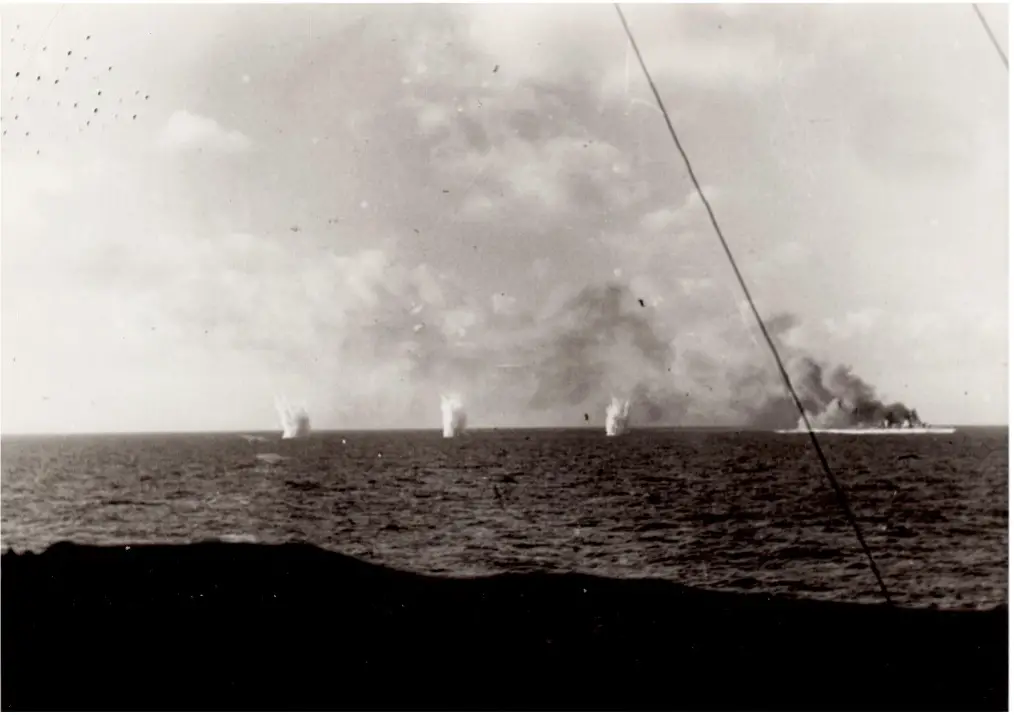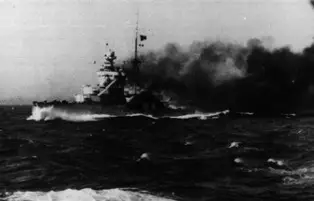The first major naval clash between the Italians and the British
Context
The nature of the Mediterranean war was that of a convoy war, the opponents had to interdict the passage of enemy convoys and ensure the safe passage of its supplies. It comes as no big surprise that the first and biggest naval engagement between Italian and British battlefleets in the Mediterranean during WW2 erupted as a result of two convoy protection operations, with both sides not (initially) aware of the enemy presence. The clash became known as the Battle of Calabria (Battaglia di Punta Stilo for the Italians) and occurred on the 9th July 1940.
Initial movements
The Regia Marina set up a convoy of 5 large transport ships with destination Benghazi. They carried supplies for the Italian forces in Libya preparing for the upcoming offensive towards Egypt. To protect the convoy, the Italians deployed a huge portion of their surface fleet:
2 battleships: Conte di Cavour and Giulio Cesare
6 heavy cruisers: Zara, Fiume, Gorizia, Pola, Trento and Bolzano
8 light cruisers: Duca degli Abruzzi, Garibaldi, Eugenio di Savoia, Duca d’Aosta, Muzio Attendolo, Montecuccoli, Alberico da Barbiano and Alberto di Giussano.
26 destroyers.
The fleet was under the command of Admiral Inigo Campioni, flying his ensign on the Giulio Cesare.
On the other side, the Mediterranean fleet had to evacuate civil personnel from Malta and set up a convoy of 8 ships also escorted by a strong naval formation:
3 battleships: Warspite, Malaya and Royal Sovereign
1 aircraft carrier: Eagle
5 cruisers: Orion, Neptune, Liverpool, Gloucester, Sydney
16 destroyers.

Admiral Inigo Campioni
Admiral Andrew Cunningham was in overall command of the fleet, onboard HMS Warspite. At the same time, Force H (based in Gibraltar) had to launch an airstrike against Sardinia. Such operation was meant to draw Italian forces away from opposing Cunningham. Both fleets departed from their ports on the 7th of July, already on the 8th, the two fleets had spotted each other thanks to submarines and air recognisance. Italian aircraft based in Tobruk spotted the British south of Crete and Campioni was immediately informed. Later that day, the Mediterranean fleet was attacked by Italian bombers that hit the cruiser Gloucester, forcing it to get back to Alexandria.
Given their position, Admiral Campioni assessed that the British battleships were too slow to intercept the convoy, however, they could still attempt the shelling of Benghazi’s port facilities while the transport ships were unloading. To avoid this, Campioni decided to face and intercept the Mediterranean fleet. At 16:00, he ordered his warships to reunite and steam north-east. At 18:00 he ordered that if no contact was made within 1 hour, the Italian formation had to return to Taranto. Supermarina (the Italian navy high command) played cautiously and, at 18:45, ordered Campioni to withdraw, given the great distance from Italian airbases and the impossibility to receive aerial support in that area. Supermarina also believed that Cunningham was steaming towards Sicily to attempt an offshore bombardment. Supermarina wanted Campioni to set course towards Calabria and cut the way to the British.
Unknown to the Italians, and with the cover of darkness, Cunningham changed his original course and attempted himself to cut the way home to the Italian fleet and engage it.
The Battle

Italian cruiser under enemy fire
During the entire morning of the 9th of July, no news came regarding the exact position of the Mediterranean fleet. At 13:15, Italian heavy cruisers were attacked by British torpedo bombers from HMS Eagle and slightly afterwards an Italian seaplane spotted the British formation 80 miles northeast of the Italian battlefleet. At that moment, Campioni realized that the British were threatening to cut his way back to Taranto and decided to close the distance and engage Cunningham’s forces.
Around 15:00 British and Italian cruiser divisions started to fire at each other at great distances (18–23 km). At that moment, the Italian fleet was proceeding in direction north/north-east in three columns. The left column with four light cruisers and six destroyers, the central column with two battleships, five heavy cruisers and ten destroyers while the right column had four light cruisers but was lagging more behind.

The heavy cruiser Zara during the battle
The Mediterranean fleet arrived from the east, with four cruisers in vanguard followed by battleships and destroyers and the aircraft carrier far behind.
At 15:53, the Italian battleships fired with their 320mm guns on the Warspite, at an estimated distance of 26.000 meters. At the same time, the cruisers of the two opposing vanguards continued to fire at each other at long distances. At 15:59, a 381mm shell from HMS Warspite hit the Giulio Cesare, this started a fire that forced the crew to halt half of the ship’s boilers, reducing its speed to 18 knots. Later, the damage proved to be not so grave but, in those moments, not knowing the exact extent of the hit, Campioni decided to pull back the battleships and to disengage. He ordered his destroyers to cover the manoeuvre with smoke screens and torpedo attacks. With this manoeuvre, the Italian fleet ultimately managed to break contact. Meanwhile, Cunningham tried to circumvent the smokescreen to pursue the Italian squadron but was then attacked by land-based aircraft which delayed his action. At 18.30 Cunningham assessed that pursuit would have dangerously brought him too close to the Italian waters and gave up the chase. In the following two days, the Mediterranean fleet succeeded in its original convoy escort mission.
Conclusions
Although the battle had ended inconclusively, both sides had accomplished their strategic objectives, the Italians, in particular, drew some lessons from the engagement. The Regia Marina experienced a total lack of cooperation with the air force (Regia Aeronautica), even resulting in being targeted by friendly fire (with no hits). This episode sparked another internal conflict between the two armed forces but also openly exposed the problem. To avoid future misidentification problems, Italian warships had the top of their bows painted with red and white stripes. The air attacks also clearly showed the limited effectiveness of level bombing in attacking ships, this further accelerated the development of the torpedo bomber branch of the Regia Aeronautica.
Sources
Bagnasco, E., & De Toro, A. (2008). Le corazzate delle classi “Conte di Cavour” e “Duilio” (1911-1956). Edizioni Storia Militare.
Giorgernini, G. (2001). La Guerra Italiana sul mare, La marina tra vittoria e sconfitta 1940-1943.